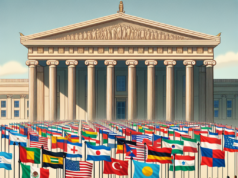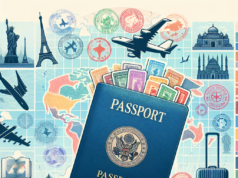
In an era marked by increasing global mobility and complex geopolitical dynamics, border security has emerged as a critical concern for nations worldwide. Recent developments in this field have unveiled a new reality that combines advanced technology, policy shifts, and international collaboration. As governments strive to balance security with the facilitation of legitimate travel and trade, understanding the latest updates in border security is essential for grasping the implications for national and international safety.
Understanding the Current Landscape of Border Security: Key Developments and Trends
The landscape of border security has evolved significantly in recent years, driven by a confluence of factors including migration crises, terrorism, and transnational crime. Governments are increasingly recognizing the need for a comprehensive approach that encompasses not only physical barriers but also intelligence sharing and community engagement. Key developments include the implementation of biometric identification systems, enhanced screening processes at ports of entry, and the establishment of rapid response teams to address emerging threats. These trends reflect a shift towards a more integrated and proactive border security framework, aimed at addressing both immediate risks and long-term challenges.
Analyzing Recent Policy Changes: Implications for National and International Security
Recent policy changes in border security have profound implications for both national and international security. Countries are revising their immigration laws, often tightening regulations to deter illegal crossings while simultaneously streamlining processes for legitimate travelers. For instance, the introduction of electronic travel authorizations and stricter visa requirements aims to enhance security without compromising economic interests. However, these policies can also lead to diplomatic tensions, particularly when they disproportionately affect certain nations or populations. The challenge lies in finding a balance that ensures safety while fostering international cooperation and goodwill.
Technological Innovations in Border Security: Enhancing Surveillance and Detection Capabilities
Technological advancements are at the forefront of modern border security strategies, significantly enhancing surveillance and detection capabilities. Innovations such as artificial intelligence, machine learning, and advanced imaging technologies are being deployed to monitor borders more effectively. Drones equipped with high-resolution cameras and sensors are increasingly used for aerial surveillance, while automated systems analyze data from various sources to identify potential threats in real-time. These technologies not only improve the efficiency of border control operations but also enable authorities to respond swiftly to incidents, thereby reducing the risk of security breaches.
The Role of International Cooperation in Addressing Border Security Challenges
International cooperation is essential in addressing the multifaceted challenges of border security. Countries are recognizing that threats such as human trafficking, drug smuggling, and terrorism transcend national borders, necessitating collaborative efforts. Initiatives such as joint training exercises, intelligence sharing agreements, and regional security partnerships are becoming more common. Organizations like INTERPOL and the United Nations play a crucial role in facilitating these collaborations, providing platforms for dialogue and coordination. By working together, nations can enhance their collective security posture and develop more effective strategies to combat transnational threats.
Public Perception and Response: How Citizens View the New Border Security Measures
Public perception of border security measures is a complex and often contentious issue. While many citizens support enhanced security protocols in light of rising global threats, there is also significant concern regarding privacy, civil liberties, and the humanitarian implications of strict border policies. Recent surveys indicate a divided opinion, with some advocating for more stringent measures to protect national interests, while others call for a more compassionate approach to immigration and asylum. The challenge for policymakers is to address these concerns while ensuring that security measures are both effective and respectful of individual rights.
Future Outlook: Anticipating Changes in Border Security Protocols and Strategies
Looking ahead, the future of border security is likely to be shaped by ongoing technological advancements, evolving geopolitical dynamics, and changing public attitudes. As nations continue to grapple with the complexities of migration and security, we can expect to see further integration of technology into border management systems, including the use of blockchain for secure data sharing and the expansion of biometric identification. Additionally, the emphasis on international cooperation will likely grow, as countries recognize the need for a unified response to shared challenges. Ultimately, the evolution of border security protocols will require a delicate balance between safeguarding national interests and upholding humanitarian values.
The latest updates in border security reveal a landscape that is both complex and dynamic, characterized by technological innovations, policy shifts, and the necessity for international collaboration. As nations navigate the challenges of ensuring safety while facilitating legitimate movement, the implications of these developments will resonate far beyond national borders. Understanding this new reality is crucial for stakeholders at all levels, from policymakers to citizens, as we collectively strive for a secure and just global environment.

























